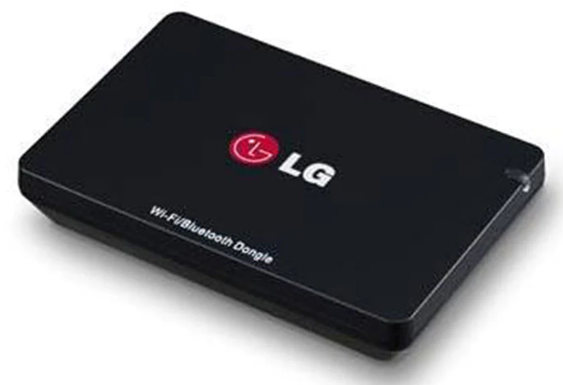LG ETGBBTBP01 Bluetooth Low Energy 4.2 USB Dongle User Guide

LG ETGBBTBP01 Bluetooth Low Energy 4.2 USB Dongle

Features
ETGBBTBP01 is the Bluetooth Low Energy 4.2 USB Dongle with PCB Printed Antenna. ETGBBTBP01 is based on TI CC2640R2FRHB solution.
- ARM® Cortex® -M3, 32bit, 48MHz clock Speed
- 275KB of Nonvolatile Memory Including 128KB of In-system Programmable Flash
- Up to 28KB of System SRAM, of Which 20KB is Ultra-Low Leakage SRAM
- 8KB of SRAM for Cache or System RAM Use.
- Integrated 2.4GHz Antenna
- Supported data rates 1Mbps, 2Mbps Bluetooth® low energy mode
- Support USB Interface with USB to UART Converter IC
- Size: 70.0 x 21.7 x 10.0 mm3(USB Dongle)
- Application: Health care and Medical, Connected Appliances
Block Diagram
Absolute Maximum Ratings
Caution:
The specifications above the Table define levels at which permanent damage to the device can occur. Function operation is not guaranteed under these conditions. Operating at absolute maximum conditions for extend periods can adversely affect the long-term reliability of the device.
Other conditions
- Do not use or store modules in the corrosive atmosphere, especially where chloride gas, sulfide gas, acid, alkali, salt or the like are contained. Also, avoid exposure to moisture.
- Store the modules where the temperature and relative humidity do not exceed 5 to 40℃ and 20 to 60%.
- Assemble the modules within 6 months. Check the soldering ability in case of 6 months over.
Operating Test Conditions
Electrical Characteristics
RF Characteristics (Conducted Test)
- Normal Condition : 25℃, VDD=5V.
- RF characteristics is board limit. It can differ according to standards
Pin Description
TOP View
Bottom View
Outline Drawing
- Module
- Case
- Gift Box
FCC/ISED Statement
FCC Part 15.19
This device complies with Part 15 of the FCC Rules. Operation is subject to the following two conditions: (1) this device may not cause harmful interference, and (2) this device must accept any interference received, including interference that may cause undesired operation.
FCC Part 15.105
This equipment has been tested and found to comply with the limits for a Class B digital device, pursuant to part 15 of the FCC Rules. These limits are designed to provide reasonable protection against harmful interference in a residential installation. This equipment generates, uses and can radiate radio frequency energy and, if not installed and used in accordance with the instructions, may cause harmful interference to radio communications. However, there is no guarantee that interference will not occur in a particular installation. If this equipment does cause harmful interference to radio or television reception, which can be determined by turning the equipment off and on, the user is encouraged to try to correct the interference by one or more of the following measures:
- Reorient or relocate the receiving antenna.
- Increase the separation between the equipment and receiver.
- Connect the equipment into an outlet on a circuit different from that to which the receiver is connected.
- Consult the dealer or an experienced radio/TV technician for help.
FCC Part 15.21
Any changes or modifications not expressly approved by the party responsible for compliance could void the user’s authority to operate this equipment. This device must not be co-located or operating in conjunction with any other antenna or transmitter.
RF Exposure
The device has been evaluated to meet general RF exposure requirements. The device can be used in portable exposure conditions without restriction.
Responsible Party
LG Innotek USA Inc. Street Address: 2540 N 1st ST STE 400 SAN JOSE, CA 95131-1016 PHONE : +1-408-350-7661 / FAX : +1-408-955-0329.
This device contains license-exempt transmitter(s)/receiver(s) that comply with Innovation, Science, and Economic Development Canada’s license-exempt RSS(s). Operation is subject to the following two conditions:
- This device may not cause interference.
- This device must accept any interference, including interference that may cause undesired operation of the device.
RF Exposure
The device has been evaluated to meet general RF exposure requirements. The device can be used in portable exposure conditions without restriction.